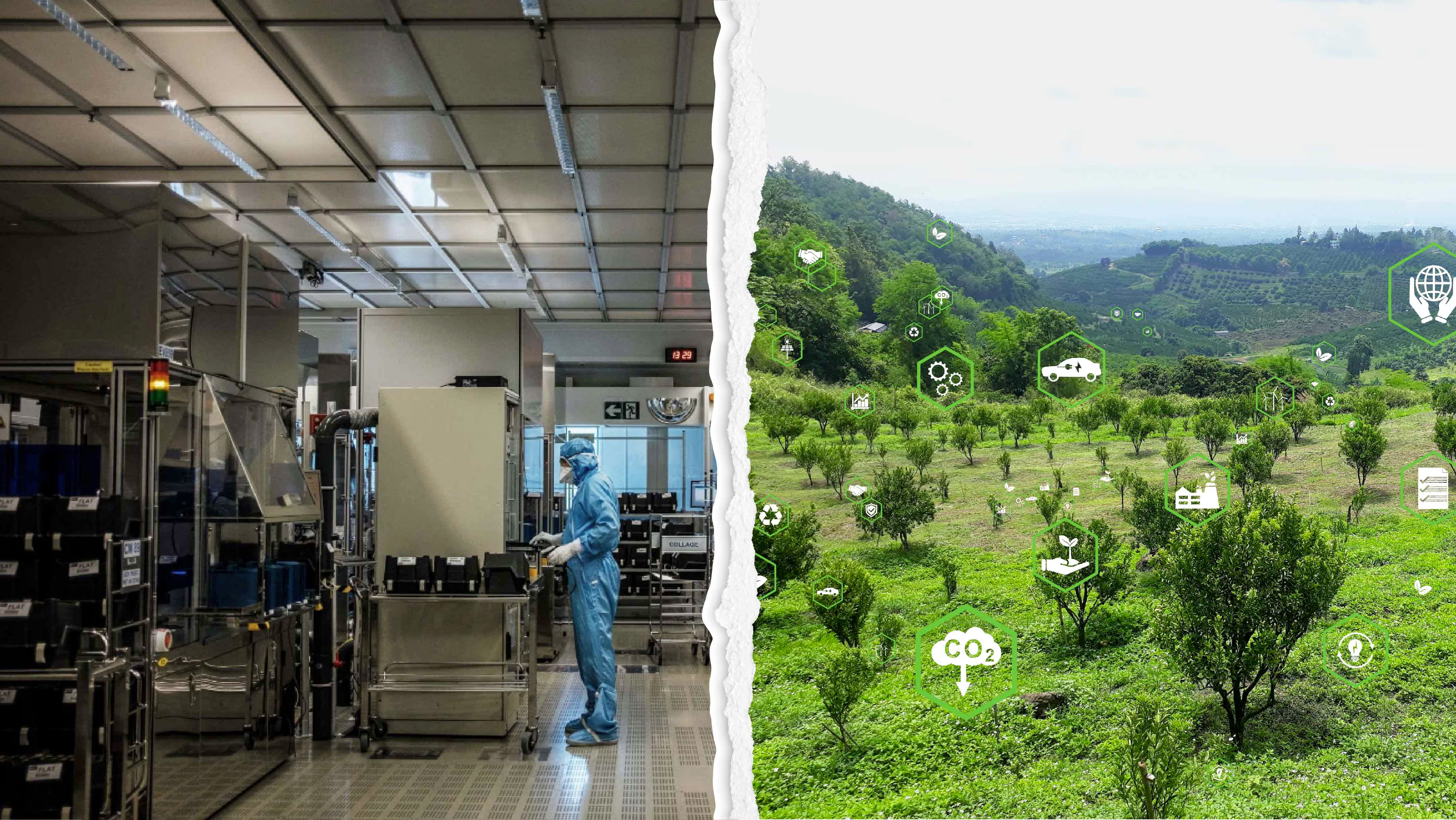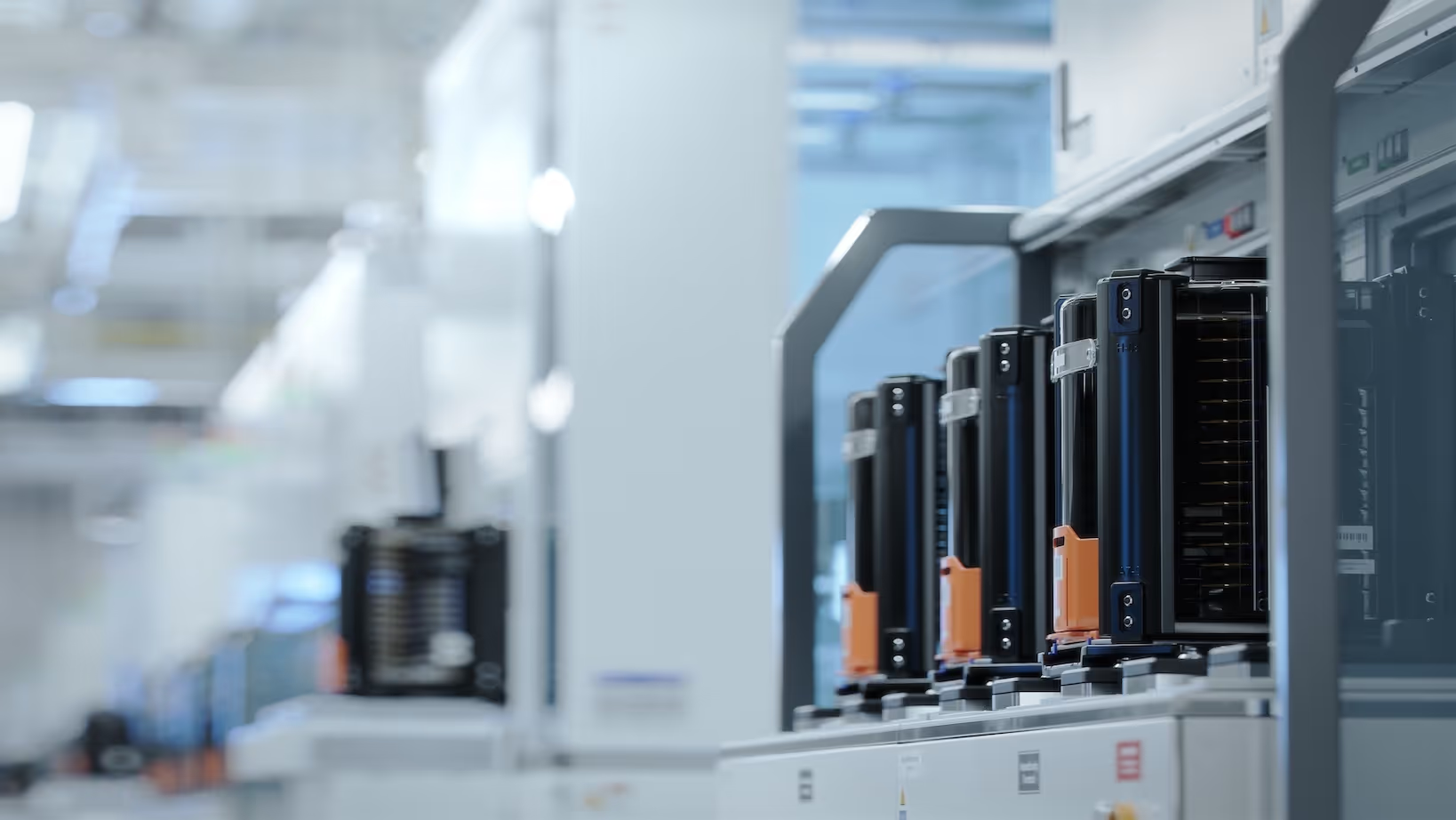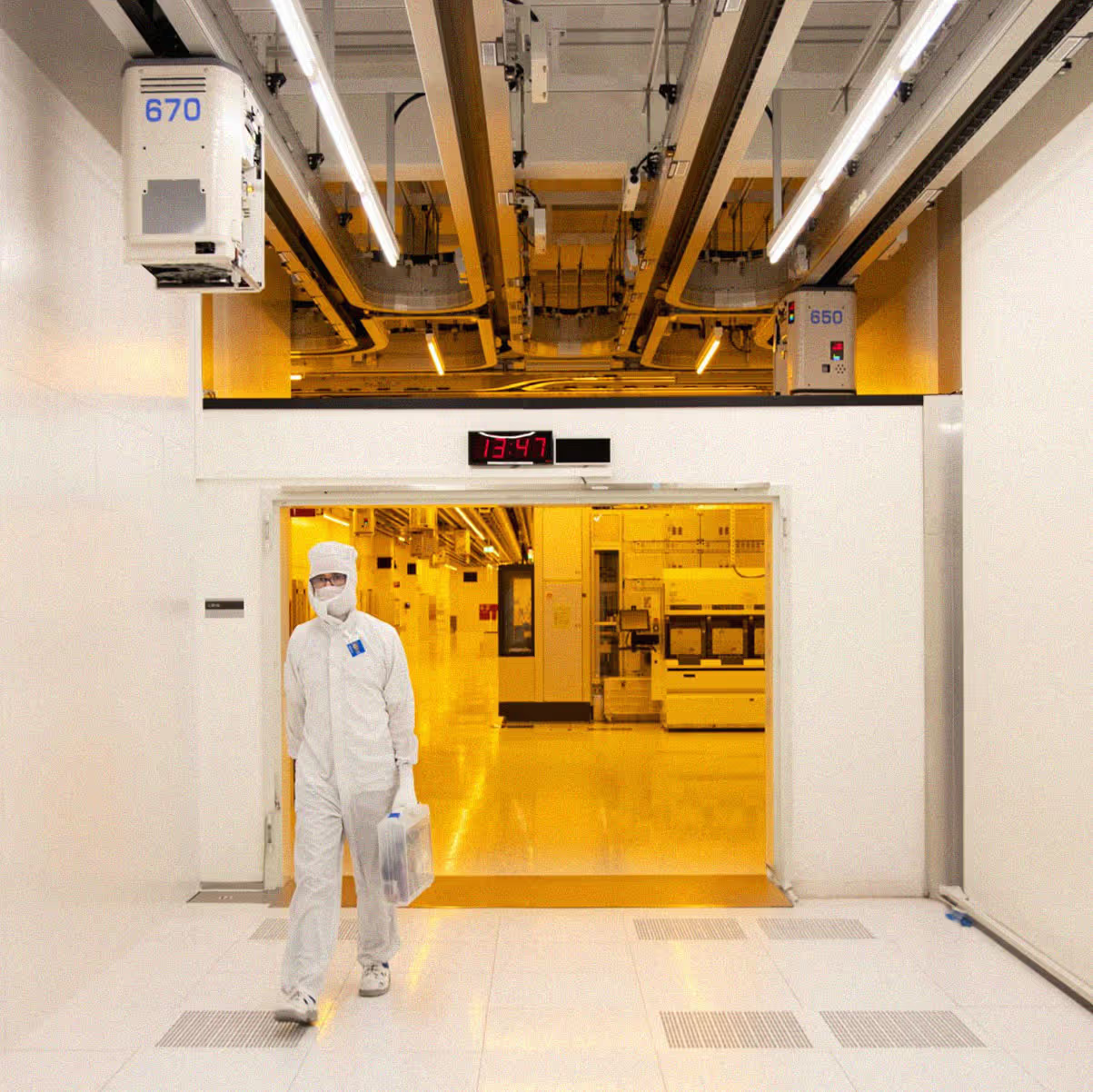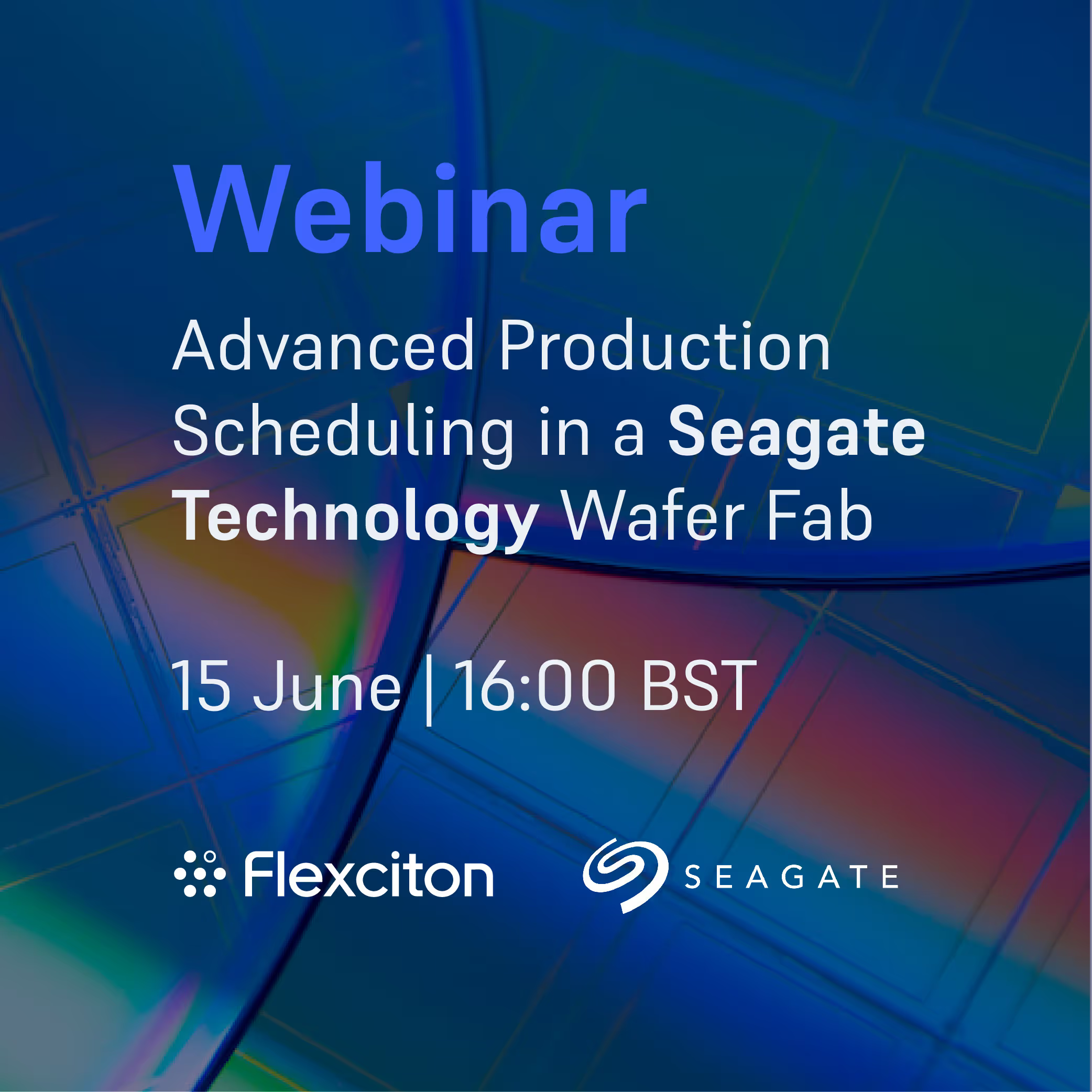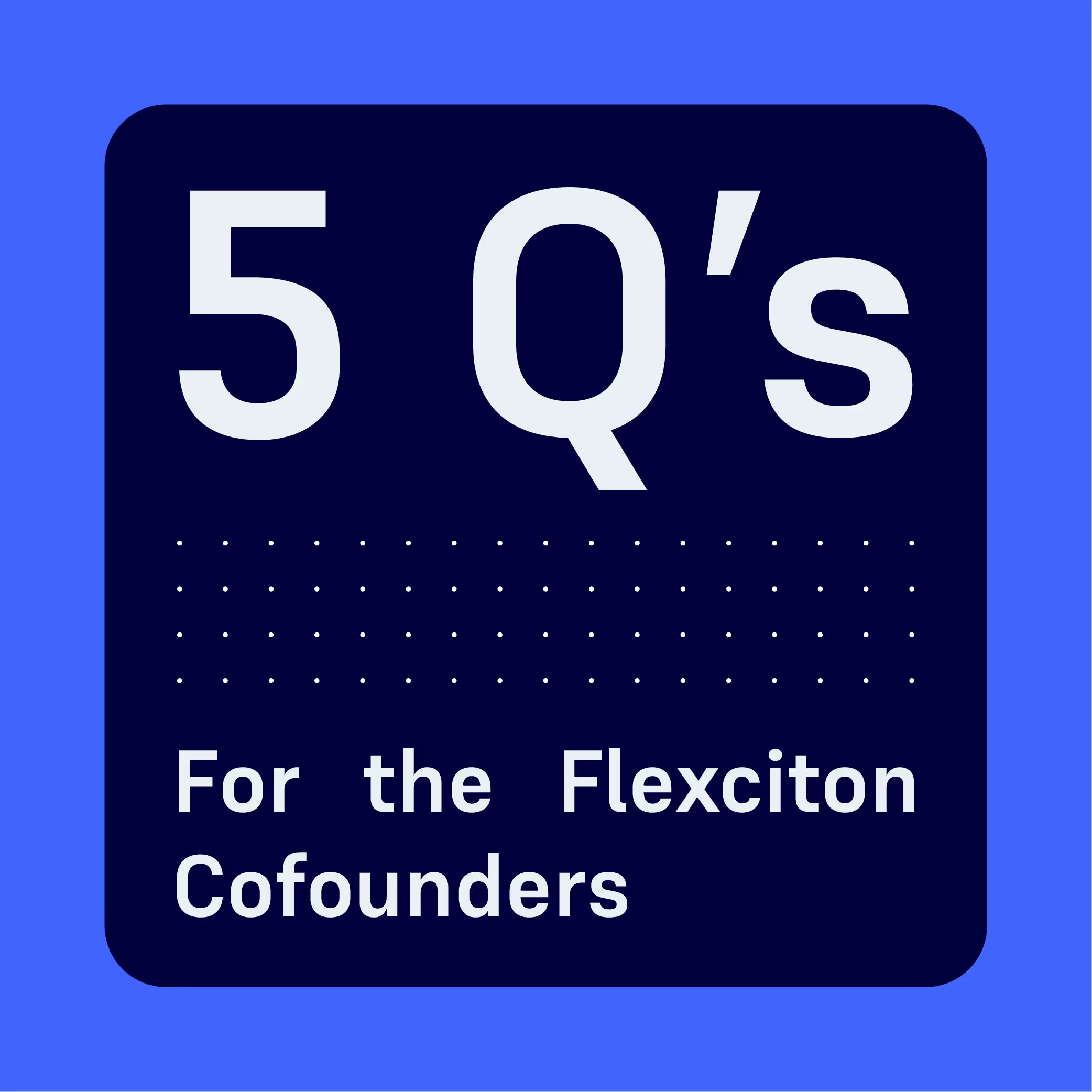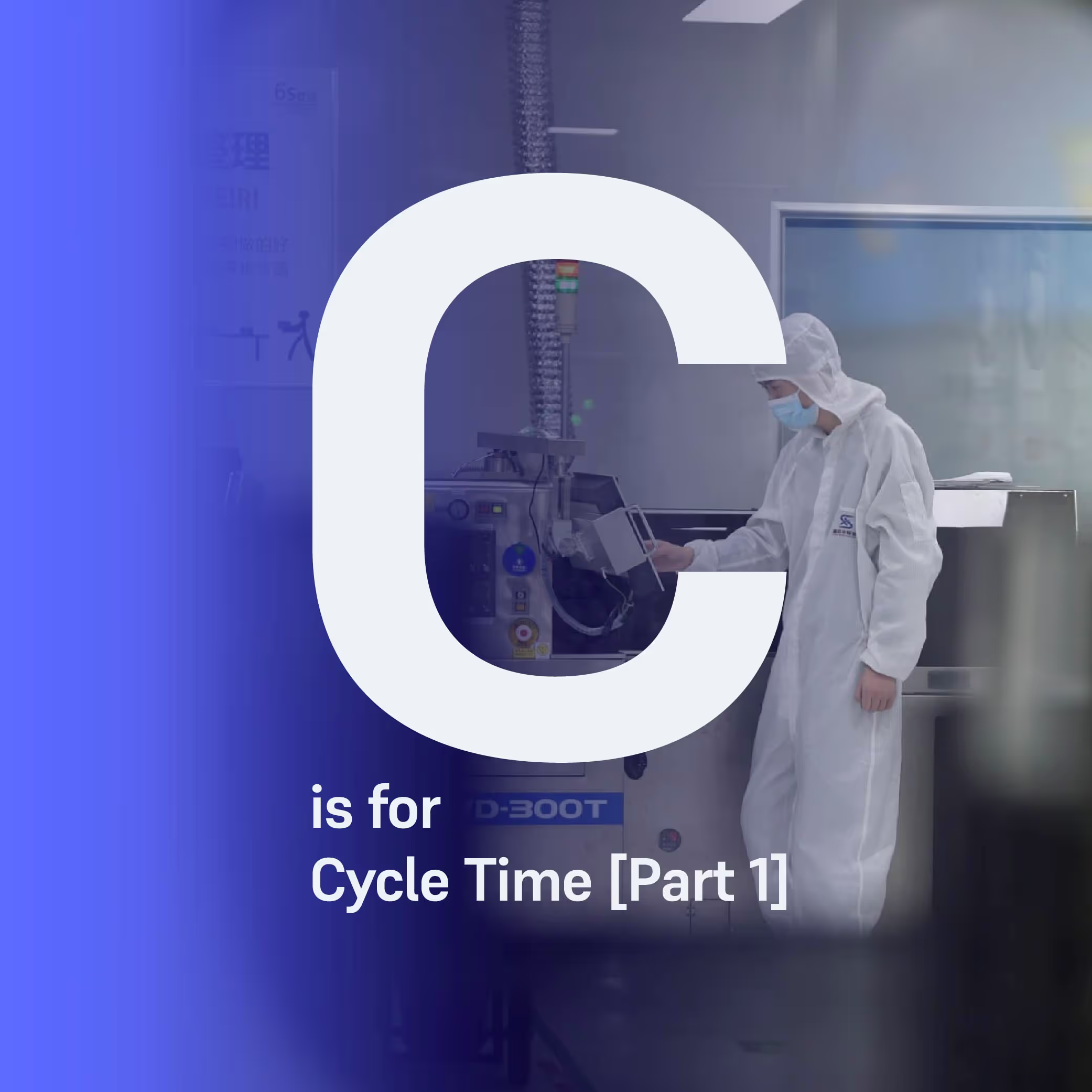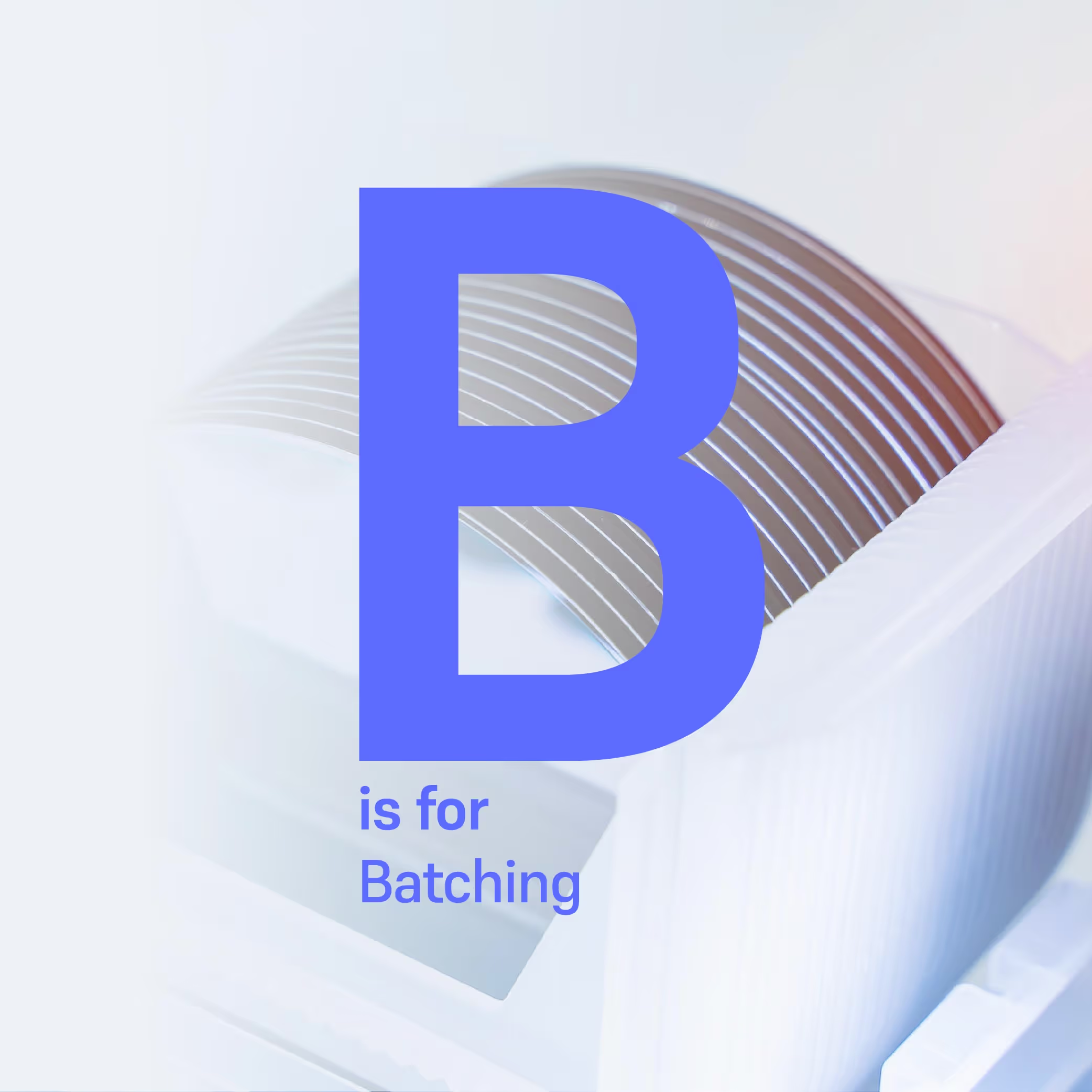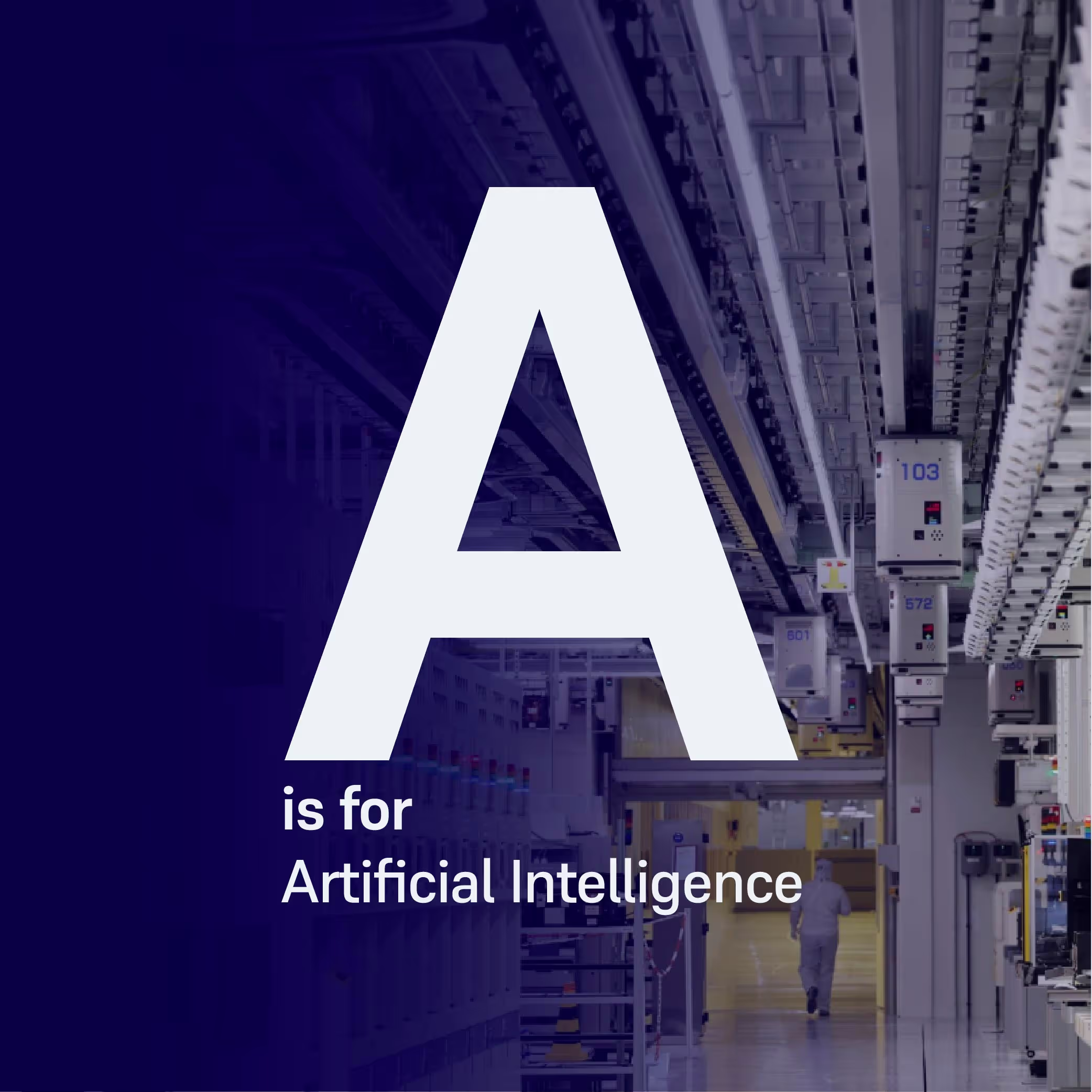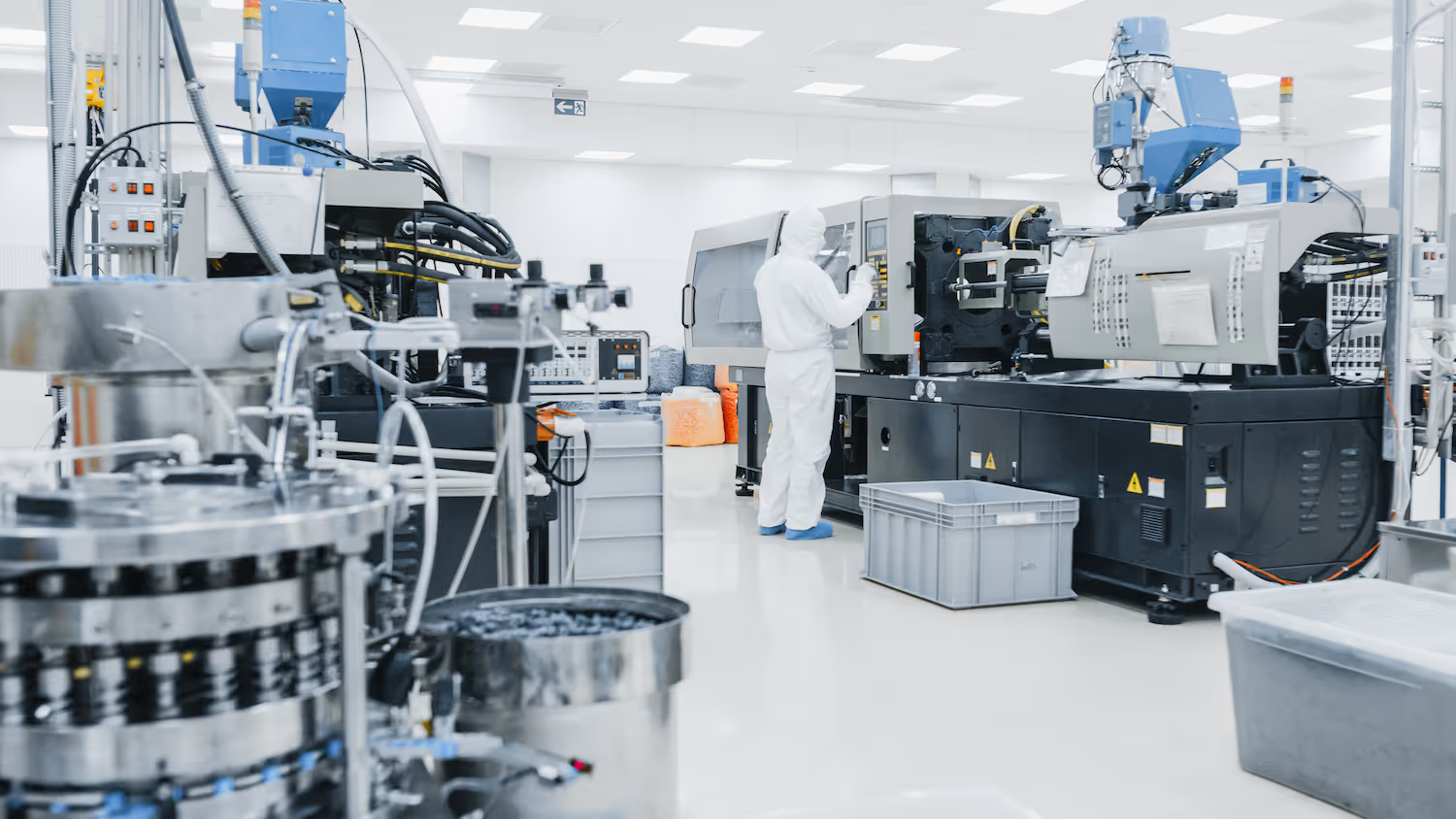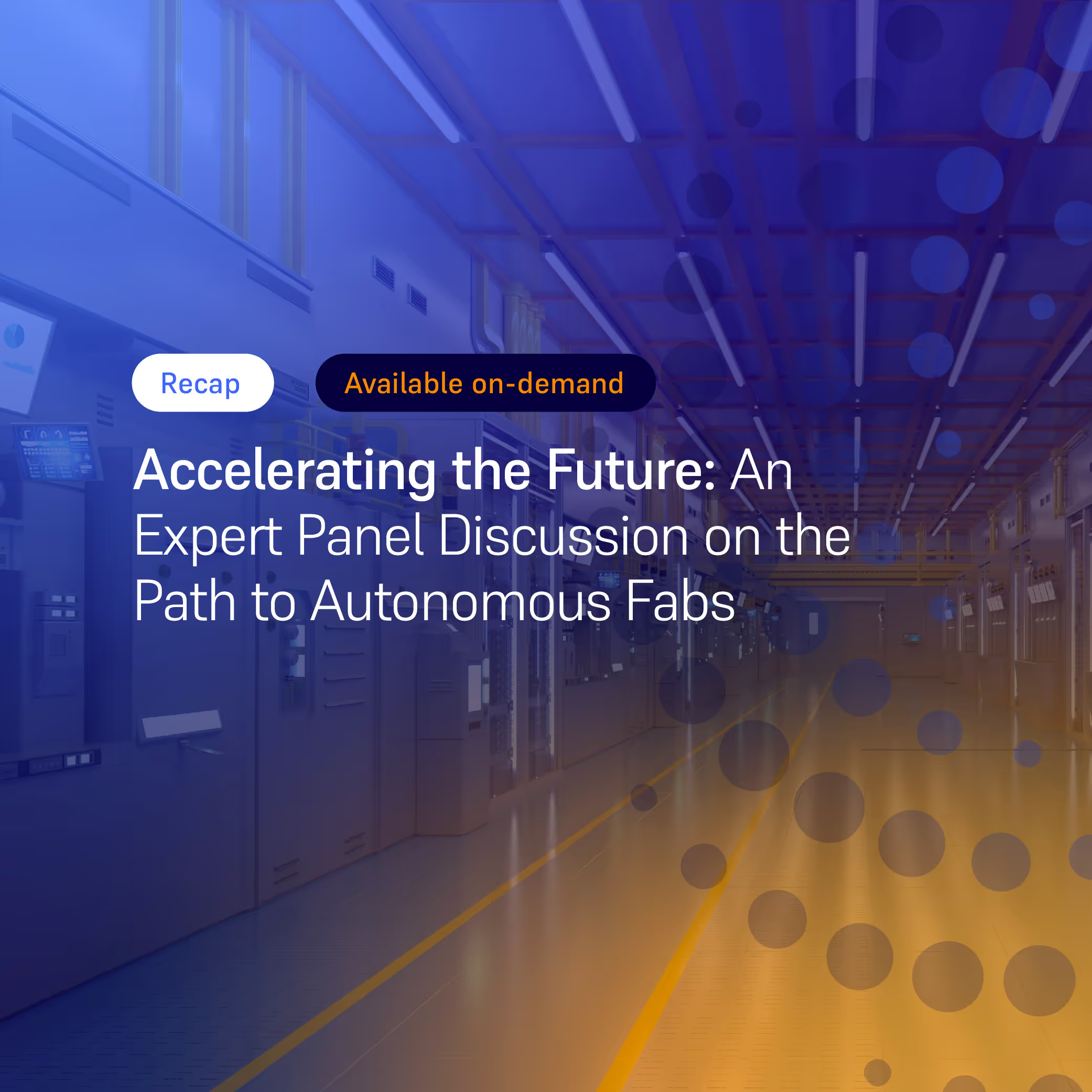C is for Cycle Time [Part 2]
In part 2, Dennis explores strategies to enhance cycle time through advanced scheduling solutions, contrasting them with traditional methods. He uses the operating curve, this time to demonstrate how AI scheduling and operational factors, such as product mix, can significantly impact cycle time.

Part 2
In the first part of 'C for Cycle Time', we explored the essence of cycle time in front-end wafer fabs and its significance for semiconductor companies. We introduced the operating curve, which illustrates the relationship between fab cycle time and factory utilization, as well as the power of predictability and the ripple effects cycle time can have across the supply chain.
In part 2, we will explore strategies to enhance cycle time through advanced scheduling solutions, contrasting them with traditional methods. We will use the operating curve, this time to demonstrate how advanced scheduling and operational factors, such as product mix and factory load, can significantly impact fab cycle time.
How wafer fabs can improve cycle time
By embracing the principles of traditional Lean Manufacturing, essentially focused on reducing waste in production, cycle time can be effectively reduced [1]. Here are a few strategies that can help improve fab cycle time:
- Improving maintenance strategies, for example moving from reactive to more proactive maintenance can improve cycle time with fewer breakdowns and more predictable tool availability [2].
- As noted in part 1, minimizing wasted time in batch formation and reducing the frequency of rework due to defects improves cycle time.
- Purchasing faster tools. Although, this can be a time-consuming and costly undertaking. In-facility expansion may take up to a year, while the commencement of a new facility could extend to three years [3].
- Establishing optimal batching in diffusion poses a considerable challenge, given the intricate process constraints within the diffusion area, such as timelinks, as we’ve explained in a recent blog.
- Balancing cycle time of hot lots with average fab cycle time. Fabs often assign higher priority to hot lots, which can negatively impact the average cycle time of production lots [4].
- Developing the skills of existing operators and expediting the onboarding process for new operators could be another means of reducing variability in production, thus impacting cycle time.
The implementation of an advanced AI scheduler can facilitate most of the strategies noted above, leading to an improvement in cycle time with significantly less effort demanded from a wafer fab compared to alternatives such as acquiring new tools. In the next sections we are going to see how this technology can make your existing tools move wafers faster without changing any hardware!
Applying an advanced AI scheduler to improve cycle time
In this section, we delve into how an advanced AI scheduler (AI Scheduler) can maintain factory utilization while reducing cycle time.
First let’s define what an AI Scheduler is. It is an essential fab software that has a core engine powered by AI models such as mathematical optimization. It possesses the ability to adapt to ongoing real-time changes in fab conditions, including variations in product mixes, tool downtimes, and processing times. Its output decisions can achieve superior fab objectives, such as improved cycle time, surpassing the capabilities of heuristic-based legacy scheduling systems. More aspects of an advanced AI scheduler can be found in our previous article, A is for AI. The AI Scheduler optimally schedules fab production in alignment with lean manufacturing principles. It achieves this by optimally sequencing lots and strategically batching and assigning them to tools.
Figure 5 shows an example of how an AI Scheduler can successfully shift the cycle time from the original operating curve closer to the theoretical operating curve. As a result, cycle time is now 30 days at 60% factory utilization. This can be accomplished by enhancing fab efficiency through measures such as minimizing idle times, reducing re-work, and mitigating variability in operations, among other strategies. In the next sections, we will show two examples in metrology and diffusion how cycle time is improved with optimal scheduling.
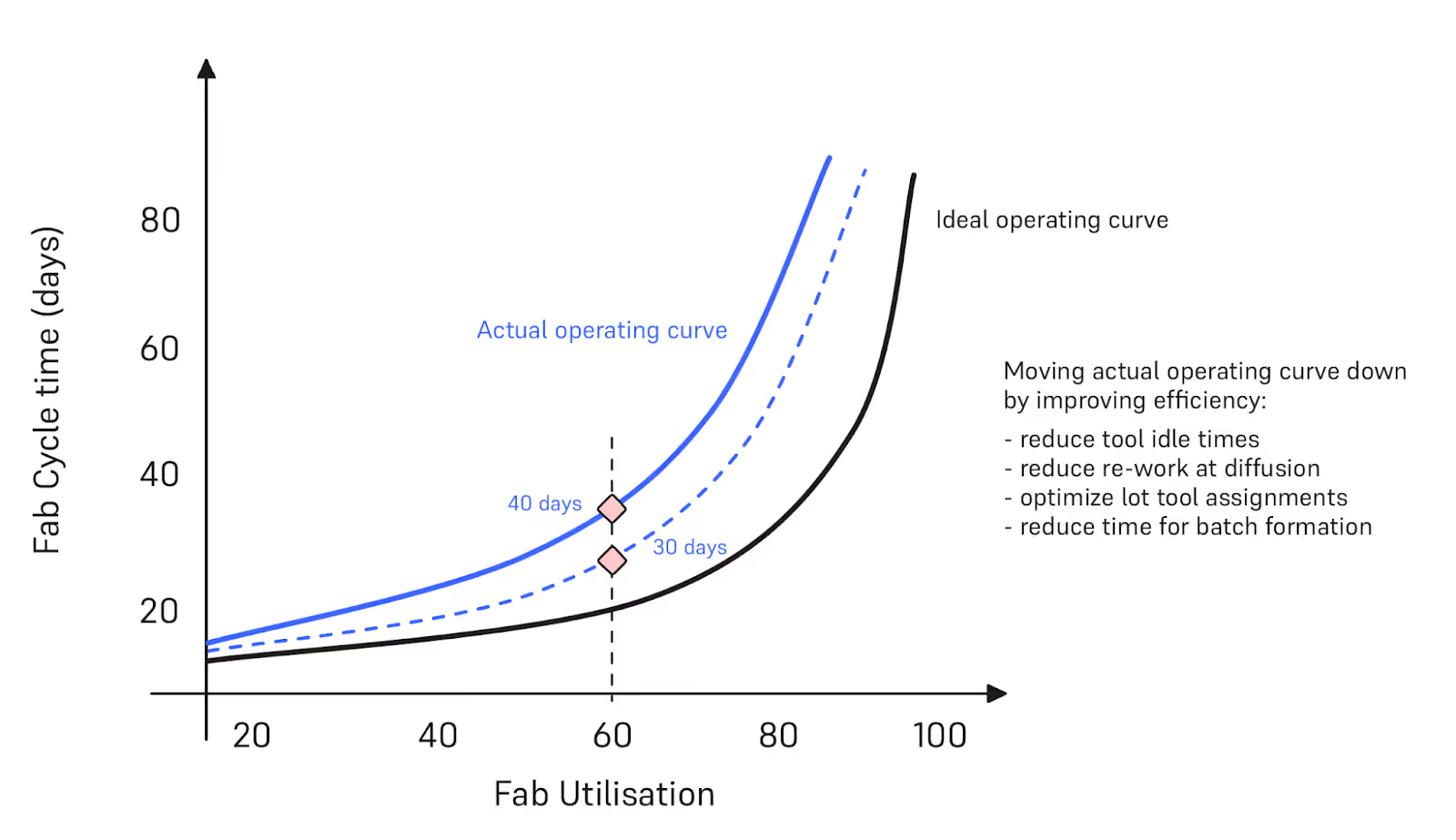
Reducing queuing times and tool utilization variability in metrology
Many wafer fabs employ a tool pull-system for dispatching. In this approach, operators typically decide which idle tool to attend to, either based on their experience or at times, randomly. Once at the tool, they then select the highest priority lots from those available for processing. A drawback of this system is that operators don't have a comprehensive view of the compatibility between the lots awaiting processing, those in transit to the rack, and the tools available. This limited perspective can lead to longer queuing times and underutilized tools, evident in Figure 6.
An AI Scheduler addresses these inefficiencies. By offering an optimized workflow, it not only shortens the total cycle time but also minimizes variability in tool utilization. This in turn indirectly improves the cycle time of the toolset and overall fab efficiency. For example, Seagate deployed an AI Scheduler to photolithography and metrology bottleneck toolsets that were impacting cycle time. The scheduler reduced queue time by 4.3% and improved throughput by 9.4% at the photolithography toolset [5]. In the metrology toolset, the AI Scheduler reduced variability in tool utilization by 75% which resulted in reduced cycle time too, see Figure 7 [6].

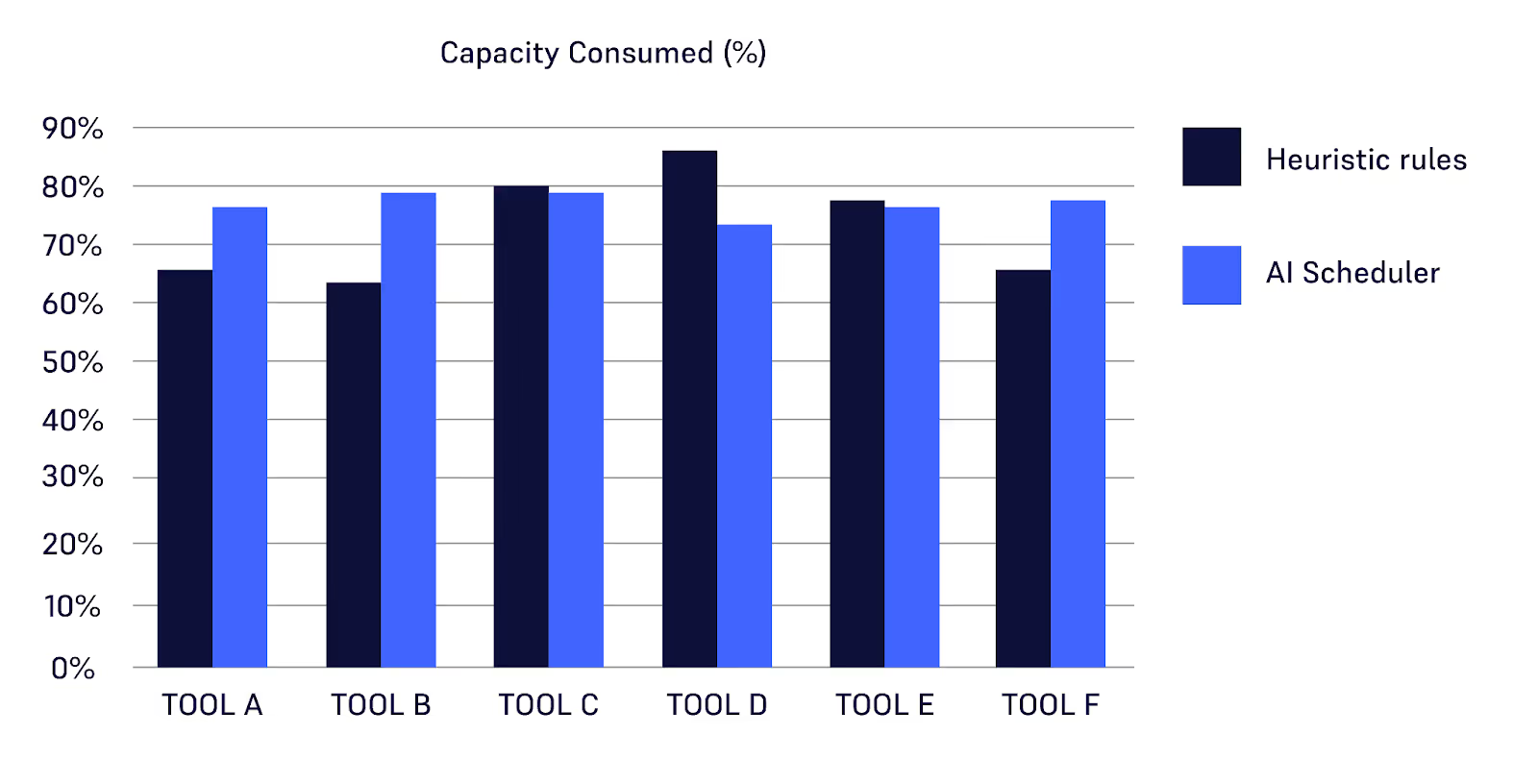
Improving cycle time and optimal batching in diffusion
Diffusion is a toolset that poses operational complexities due to its intricate batching options and several coupled process steps between cleaning and various furnace operations [7]. Implementing an AI Scheduler can mitigate many of these challenges, leading to reduced cycle time:
- Strategic Batching can reduce total cycle time in diffusion. To maximize the benefit of an AI Scheduler, the fab should provide good quality data.
- Automated Furnace Loading: Typically, diffusion loading is accomplished via a pull-system from the furnace. This means that operators would revisit the cleaning area to manually pick the best batches, based on upcoming furnace availability. This approach often demands substantial resources and time, thereby increasing cost or cycle time. The AI Scheduler curtails this time considerably, freeing up operators for other essential tasks, which indirectly may reduce cycle time elsewhere.
- Reduction of Timelinks Violations: A recent pilot implementation of an AI Scheduler in diffusion at a Renesas fab underscored its effectiveness. As displayed in Figure 8, timelink violations were significantly reduced. This minimizes the necessity for rework, further cutting down the cycle time, as explained earlier in the article.
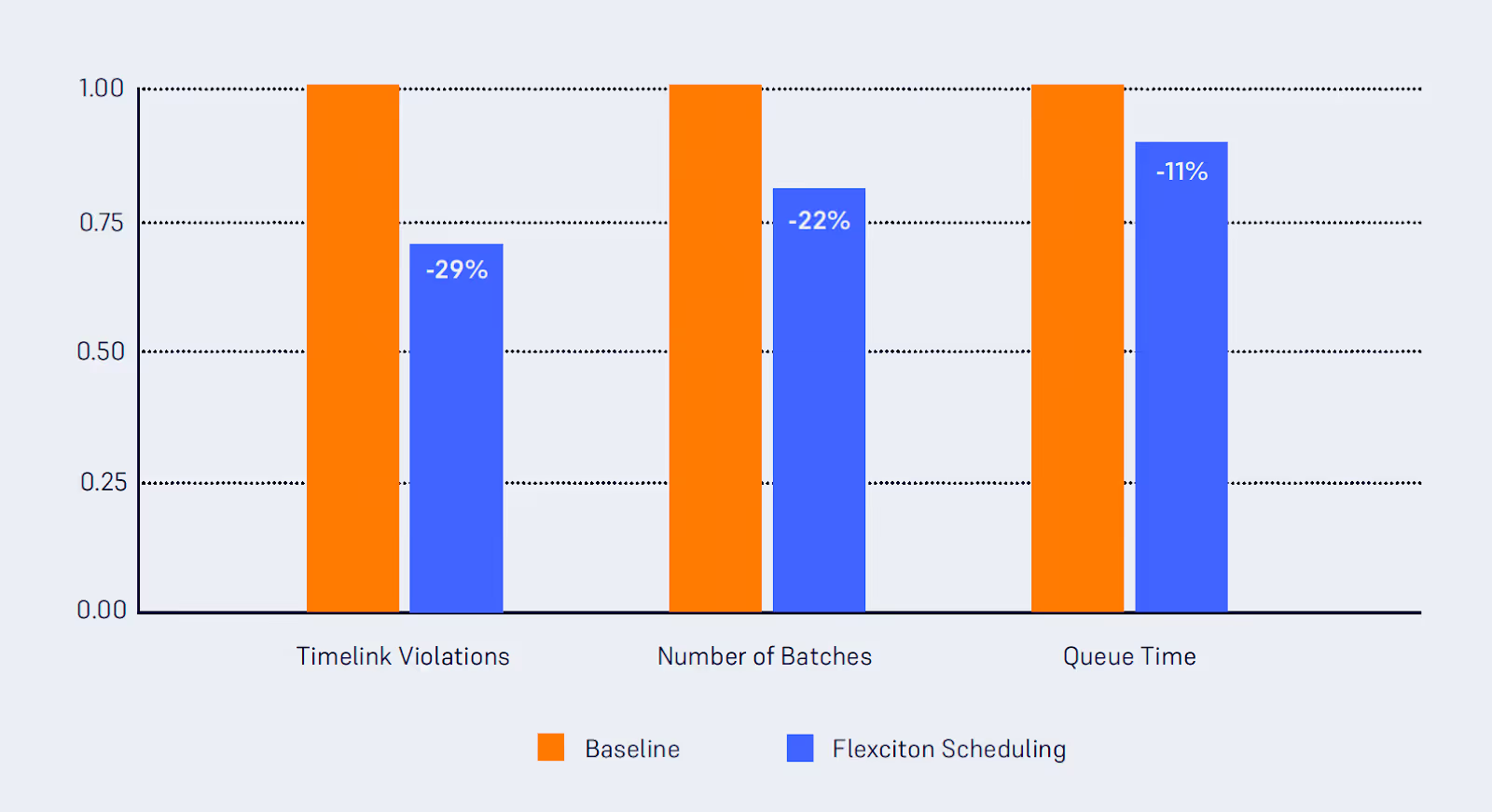
Maximizing the value of the AI Scheduler by integrating with other applications
In the above examples of photo, metrology and diffusion toolsets, the AI Scheduler can support operators to achieve consistently high performance. To enhance the efficiency of the scheduling system in fabs predominantly run by operators with minimal AMHS (Automated Material Handling Systems) presence, pairing the scheduler with an operator guidance application, as detailed in one of our recent blogs on user-focused digitalisation, can be a valuable approach. This software will suggest the next task required to be executed by an operator.
The deployment of an AI Scheduler should focus on bottleneck toolsets - specifically, those that determine the fab's cycle time. Reducing the cycle time of a toolset will be inconsequential if that toolset is not a bottleneck. Consequently, fabs should consider the following two approaches:
- Ensure the deployment of the AI Scheduler on the most critical toolsets to effectively address dynamic bottlenecks. This ensures that as bottlenecks shift, the AI Scheduler can promptly reduce the cycle time of the newly identified bottlenecked toolset. By doing so, fabs can consistently maintain a low cycle time.
- The introduction of a global (or a fab wide) application layer – such as a solution that looks across all the toolsets and all lots across the whole line – can help coordinate all deployed AI Schedulers. This application should indicate which toolsets are bottlenecks and it should also adjust lot priorities or production targets per toolset to ensure a smooth flow across the line. The interaction between global applications and local scheduling applications can be seen in recent papers [9] [10].
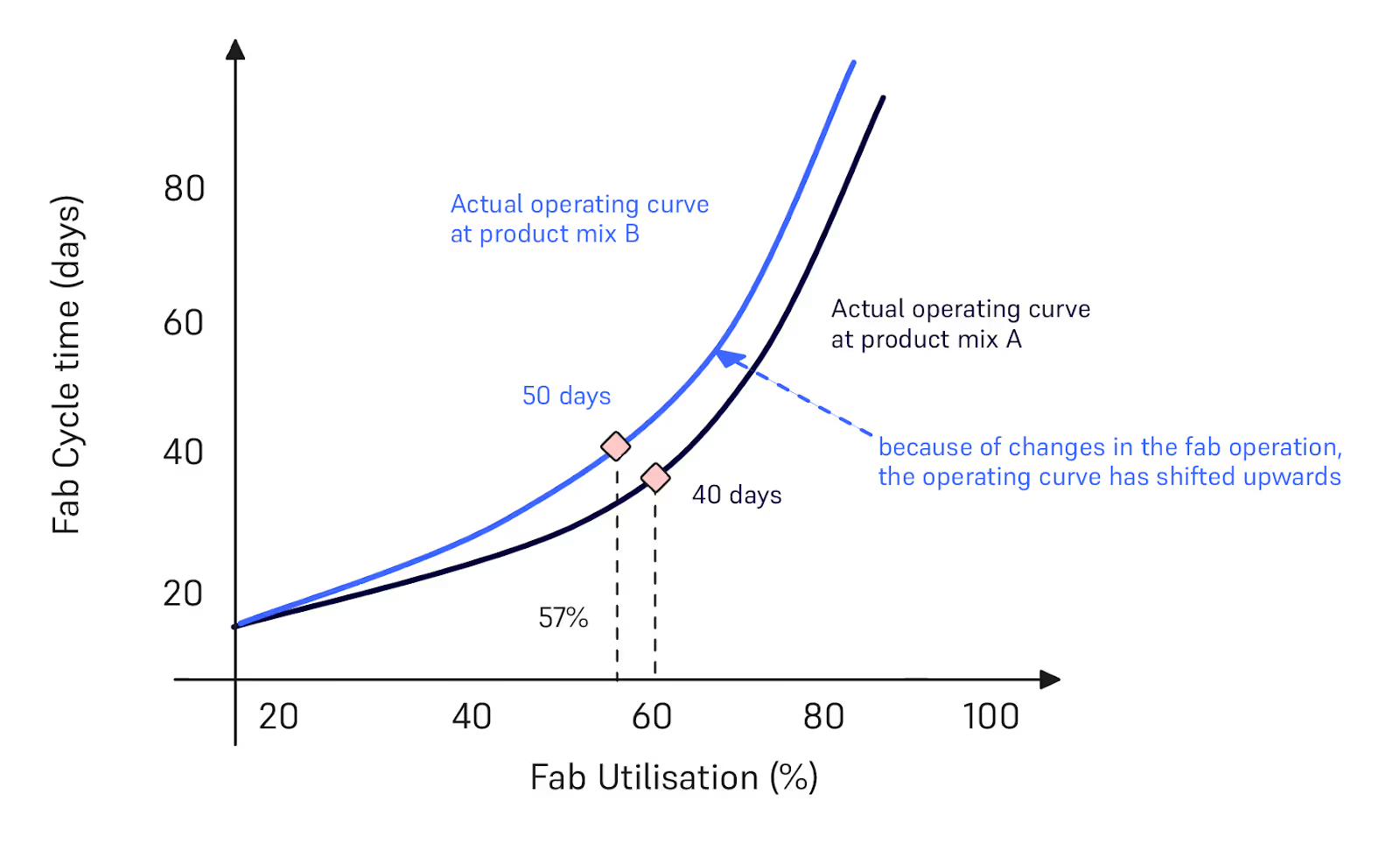
Dealing with dynamic changes in the fab and understand trade-offs between competing objectives
Another factor to consider is that the actual operating curve of the fab is moving constantly based on changes in the operating conditions of the fab. For example, if the product mix changes substantially, this may impact the recipe distribution enabled in each tool and subsequently, the fab cycle time vs factory utilization curve would shift. The operating curve can also change if the fab layout changes, for example when new tools are added.
In Figure 9, we show an example wherein the cycle time versus factory utilization curve for product mix A shifts upward. This signifies an increased cycle time in the fab due to the recent changes in the product mix (and the factory utilization was slightly reduced under these new conditions). An autonomous AI Scheduler, as described by Sebastian Steele in a recent blog, should be able to understand the different trade-offs. For example, in Figure 10, the AI Scheduler could deal with the same utilization as before (60%) with product mix A, but the cycle time will stay at 50 days (10 days more than in the case with product mix A). Another alternative is that the user can then decide if they want to customize this trade-off so that the fab can move back to the same cycle time with this new product mix B at 40 days but staying with lower utilization at 57%.
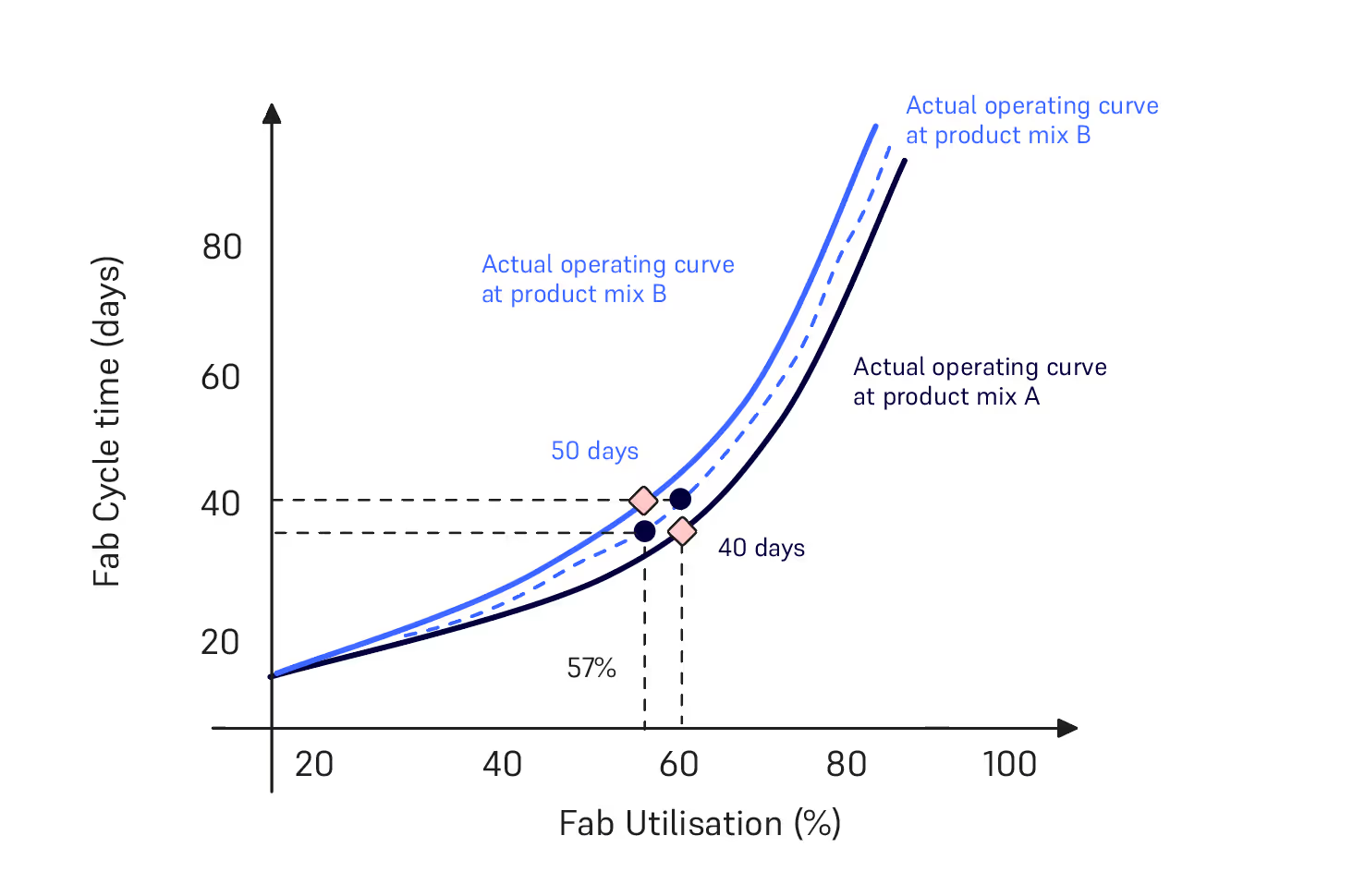
Trade-offs between different objectives at local toolsets may impact the fab cycle time. Consider the trade-offs in terms of batching costs versus cycle time. For instance, constructing larger batches might be crucial for high-cost operational tools such as furnaces in diffusion and implant. However, this approach could lead to an extended cycle time for the specific toolset and, consequently, an overall increase in fab cycle time.
Tool availability and efficiency significantly affect cycle time, akin to the influence of product mix on operating curves. If tools experience reduced reliability over time, the operating curve may shift upward, resulting in a worse cycle time for the same utilization. While the scheduler cannot directly control tool availability, strategically scheduling maintenance and integrating it with lot scheduling can positively impact cycle time. A dedicated future article will delve into this topic in more detail.
Conclusion
The topic of the cycle time has been enriched with the introduction of an AI Scheduler, bringing a paradigm shift in how we perceive and manage the dynamics of front-end wafer fabs. As highlighted in our exploration, these schedulers do more than just automate – they optimize. By understanding and predicting the nuances of operations, from tool utilization to lot prioritization, advanced AI schedulers provide a roadmap to not just manage but optimize cycle time considering alternative trade-offs. In future articles we will talk about how scheduling maintenance and other operational aspects can be considered in a unified and autonomous AI platform that we believe would be the next revolution, after the innovations from Arsenal of Venice, Ford and Toyota.
Author: Dennis Xenos, CTO and Cofounder, Flexciton
References
- [1] James P. Ignizio, 2009, Optimizing Factory Performance: Cost-Effective Ways to Achieve Significant and Sustainable Improvement 1st Edition, McGraw-Hill, ISBN 978-0-07-163285-0
- [2] Lean Production, 2023, TPM (Total Productive Maintenance), URL.
- [3] Ondrej Burkacky, Marc de Jong, and Julia Dragon, 2022, Strategies to lead in the semiconductor world, McKinsey Article, URL.
- [4] Philipp Neuner, Stefan Haeussler, Julian Fodor, and Gregor Blossey, 2023, Putting a Price Tag on Hot Lots and Expediting in Semiconductor Manufacturing. In Proceedings of the Winter Simulation Conference (WSC '22). IEEE Press, 3338–3348.
- [5] Robert Moss, Dennis Xenos, Tina O’Donnell, 2023, Deployment of an Advanced Photolithography Scheduler at Seagate Technology, IFORS News, Volume 18, Issue 1, ISSN 2223-4373, pp. 8–10, URL.
- [6] Robert Moss, 2022, Ever-decreasing circles: how iterative modelling led to better performance at Seagate Technologies. Euro 2022 Conference, Finland, URL
- [7] Thomas Beeg, 2023, Impact of “time links” or controlled queue times, Factory Physics and Automation, URL.
- [8] Jamie Potter, 2023, Fab scheduling is now so complex that it needs next-generation intelligent software, Silicon Semiconductor Magazine, Volume 44, Issue 2, pp. 26-29, URL.
- [9] I. Konstantelos et al., 2022, "Fab-Wide Scheduling of Semiconductor Plants: A Large-Scale Industrial Deployment Case Study," 2022 Winter Simulation Conference (WSC), Singapore, pp. 3297-3308, doi: 10.1109/WSC57314.2022.10015364.
- [10] Félicien Barhebwa-Mushamuka. 2020, Novel optimization approaches for global fab scheduling in semiconductor manufacturing. Other. Université de Lyon. English. ⟨NNT : 2020LYSEM020⟩. ⟨tel-03358300⟩
More resources
Stay up to date with our latest publications.

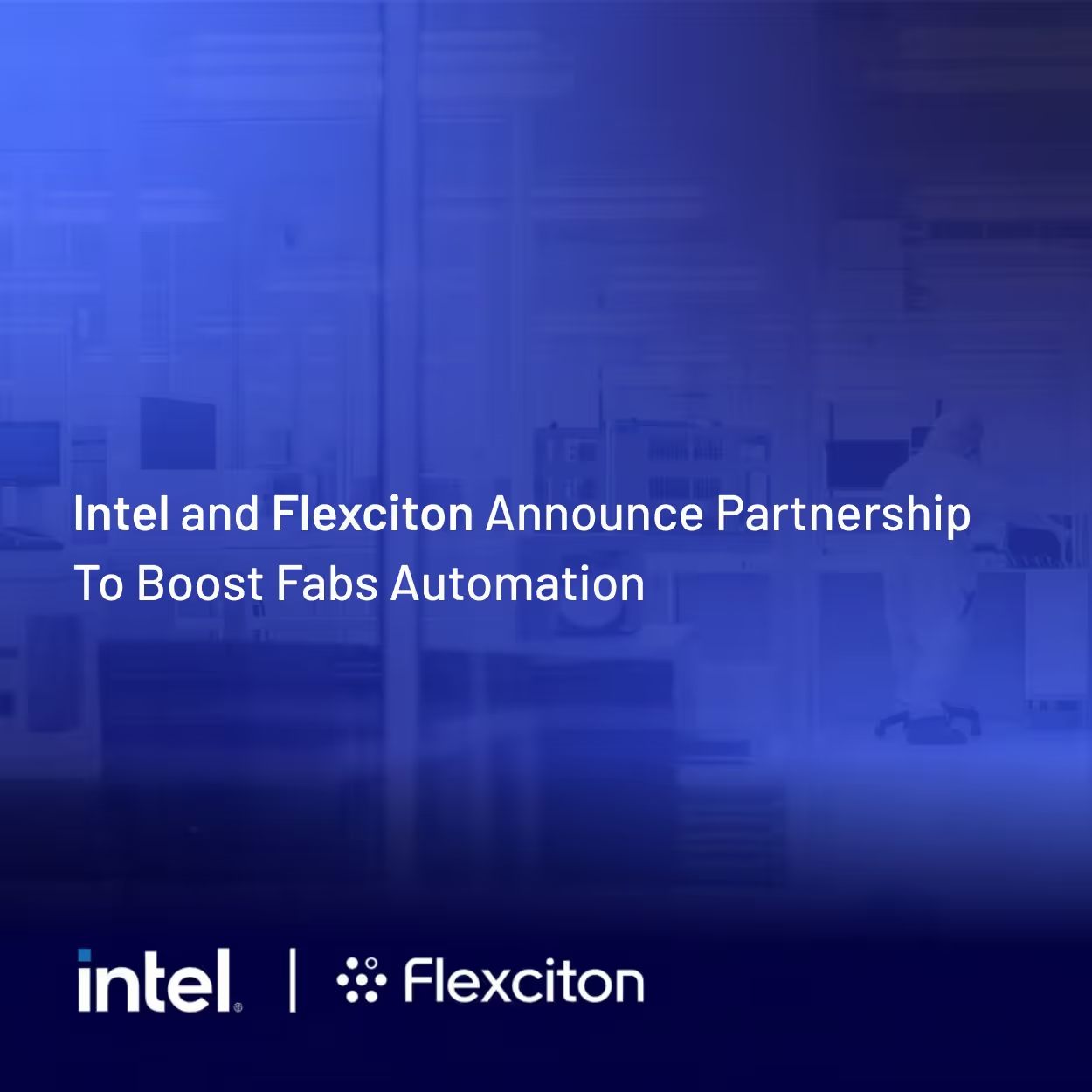



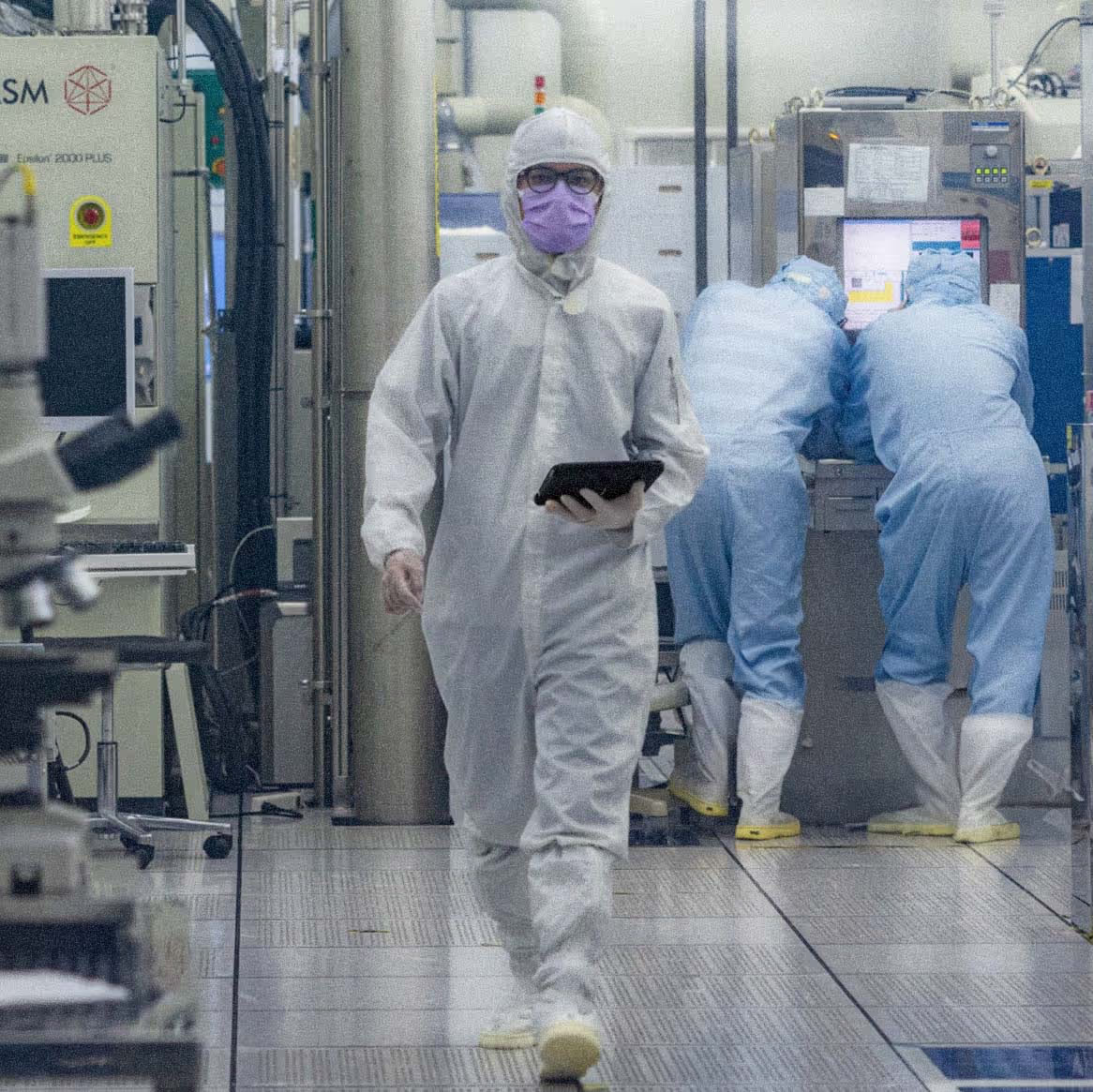

.avif)
.avif)
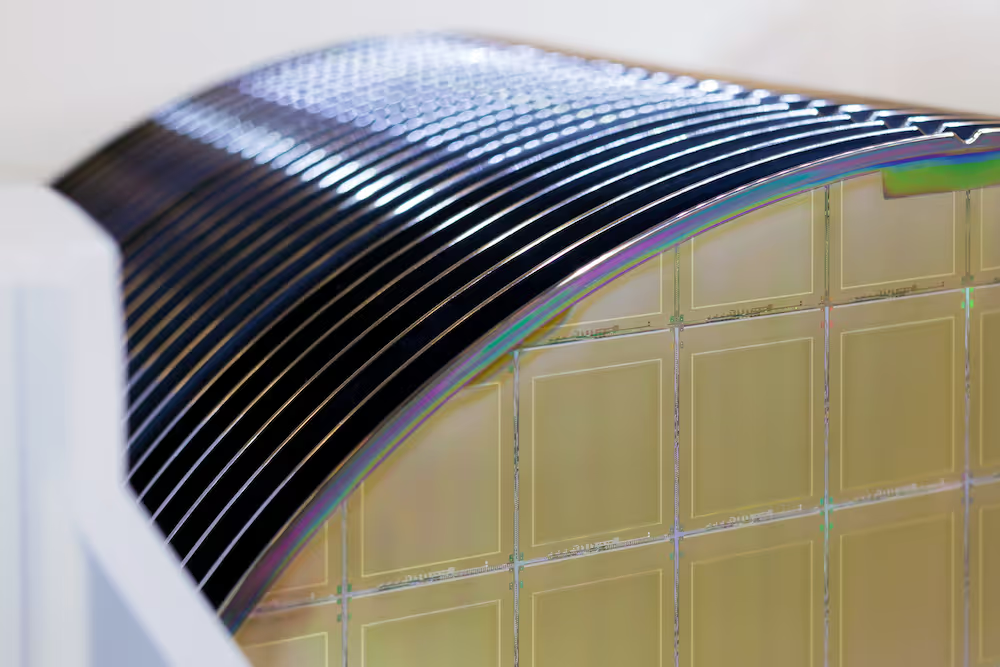










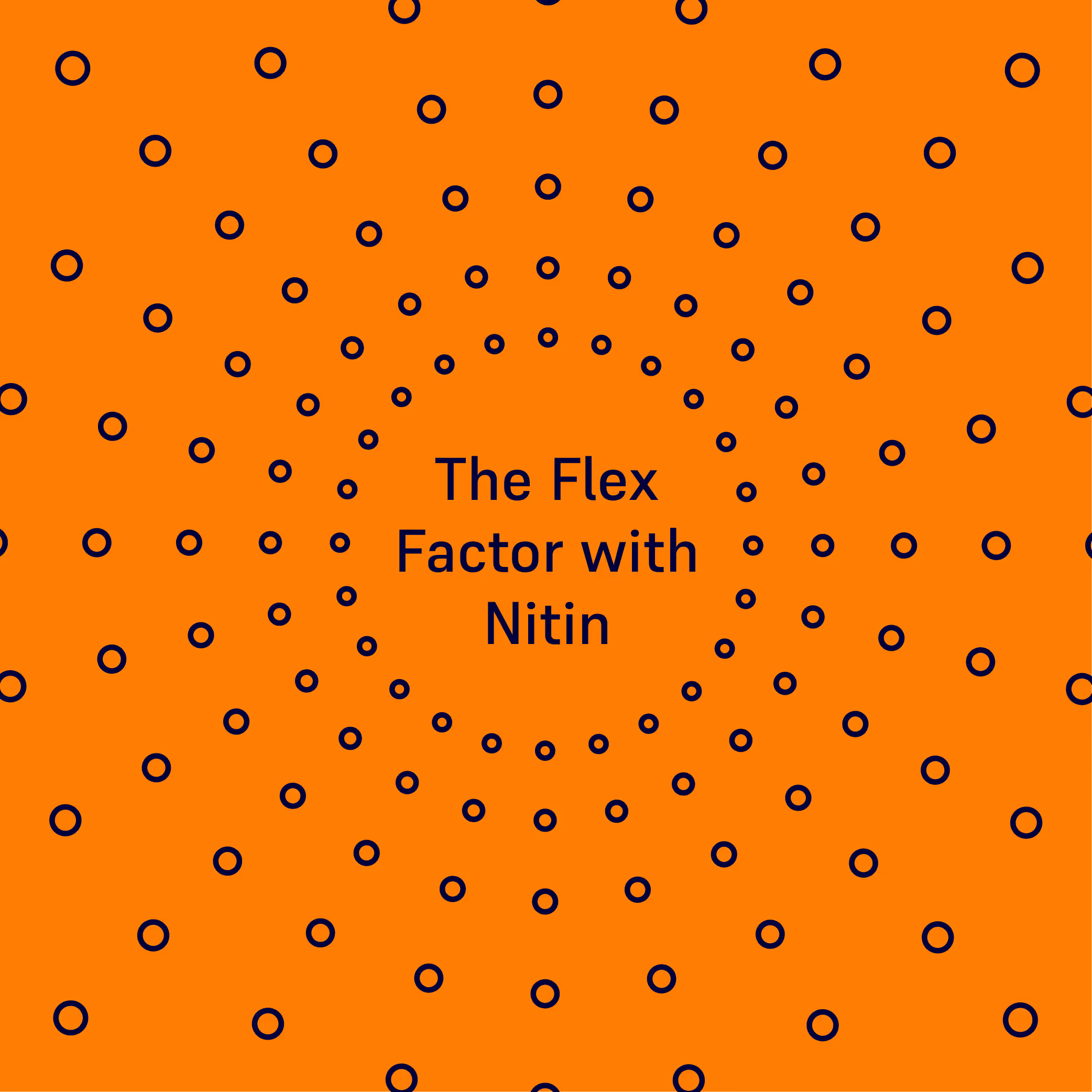




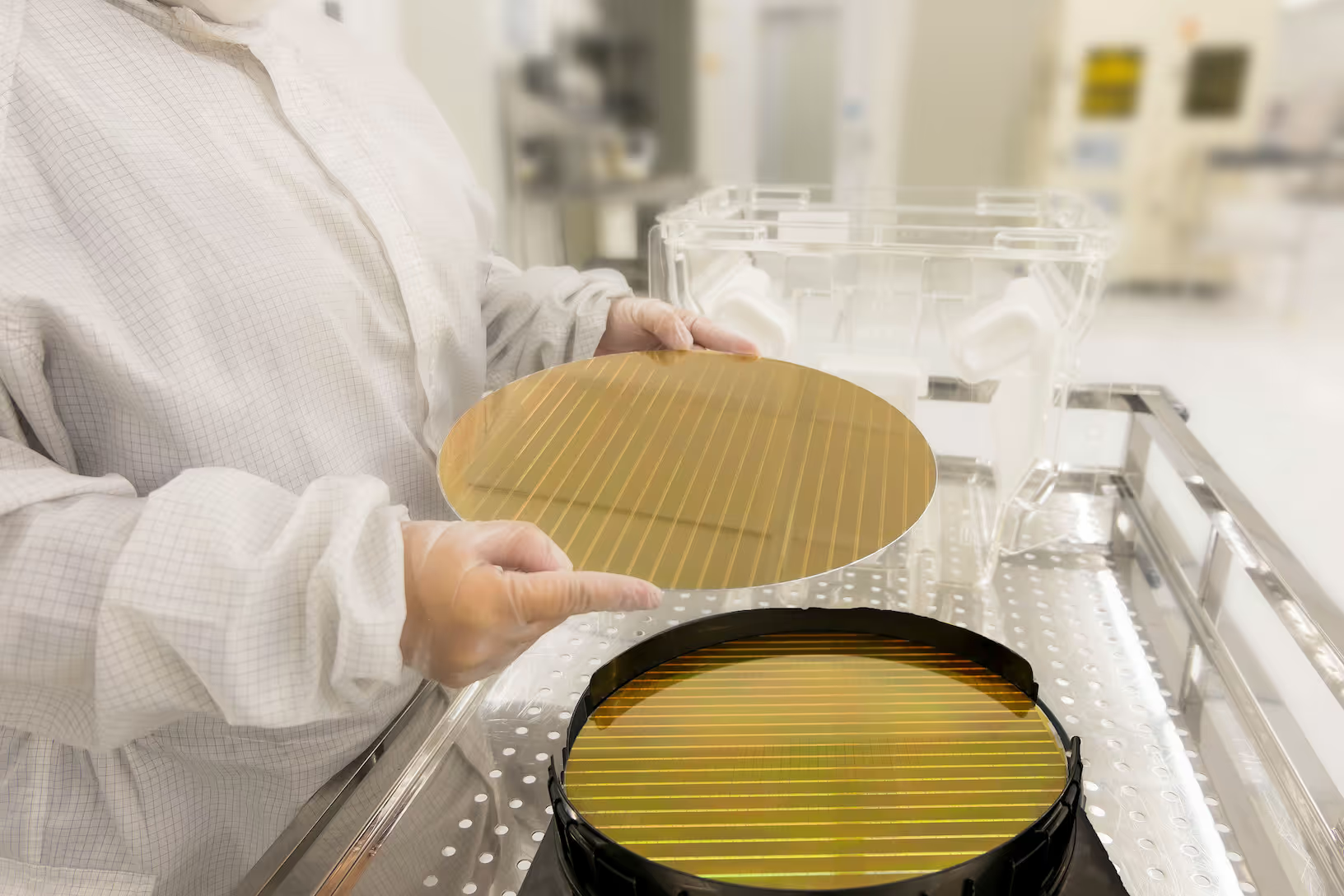

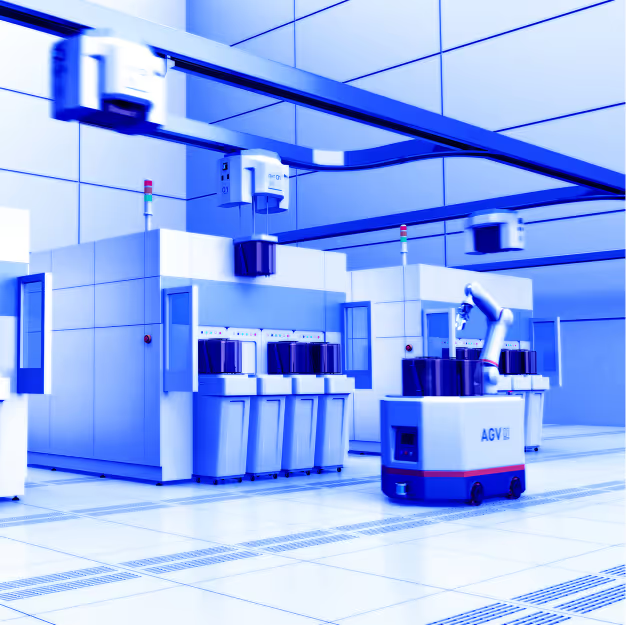
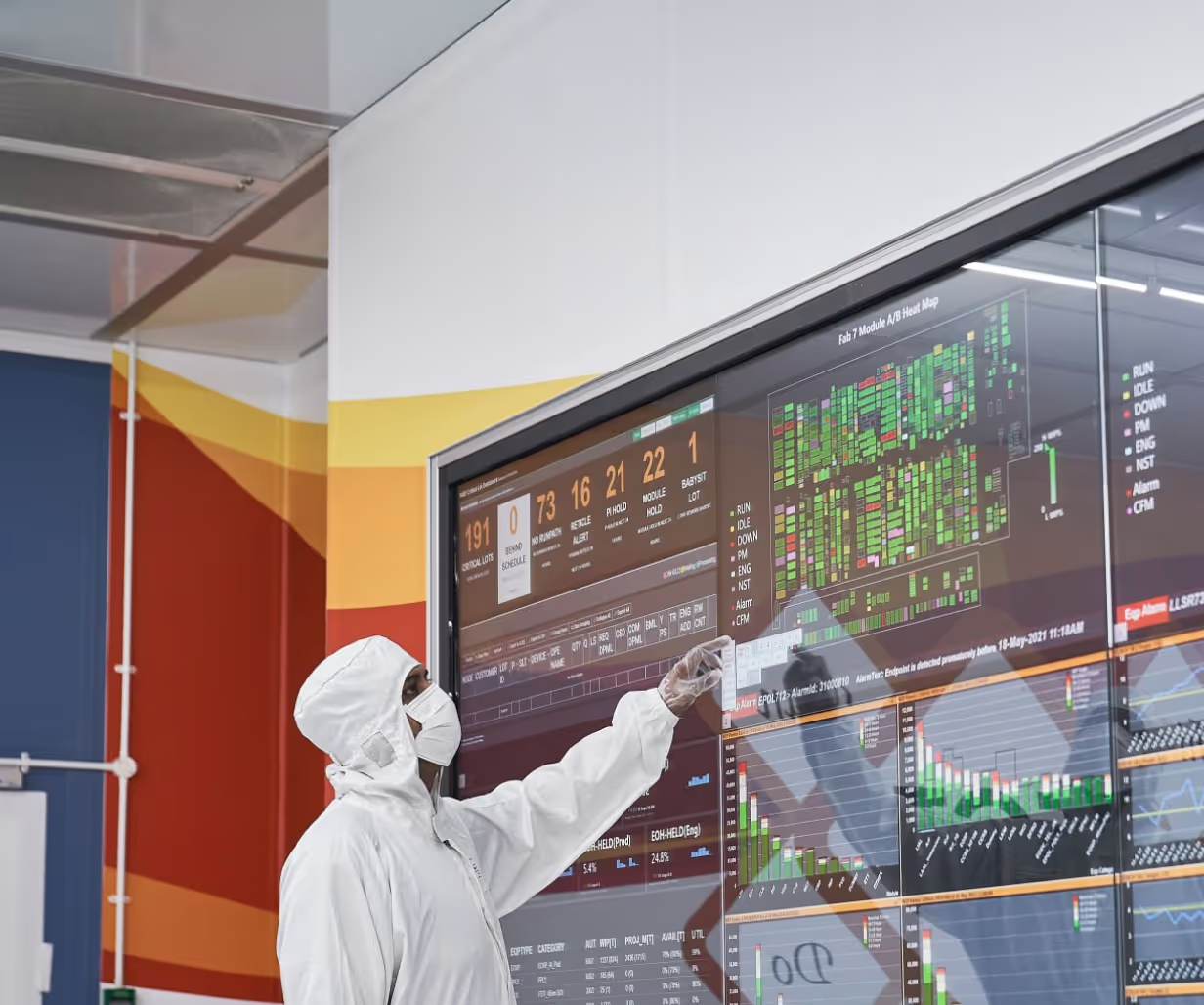


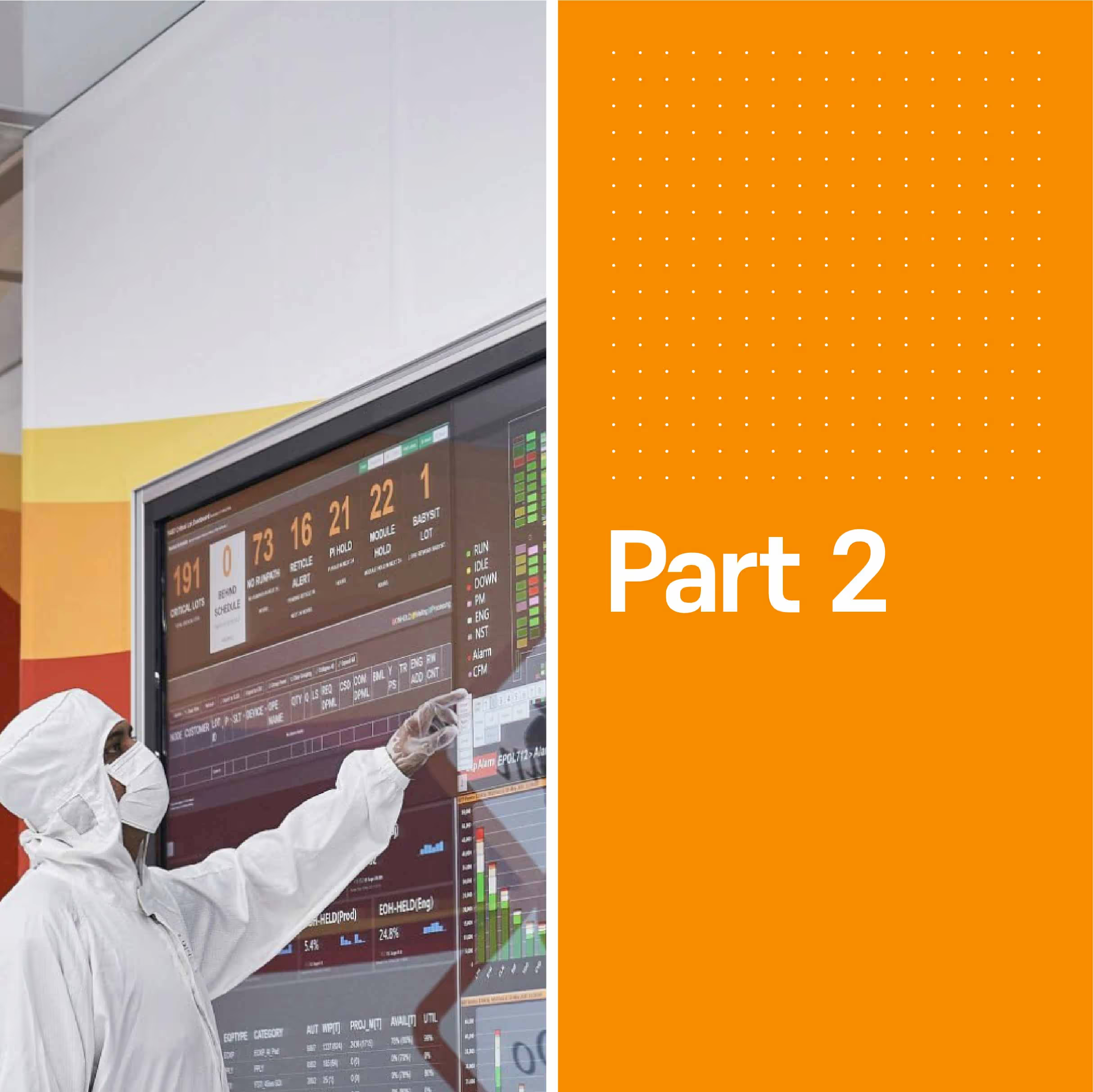



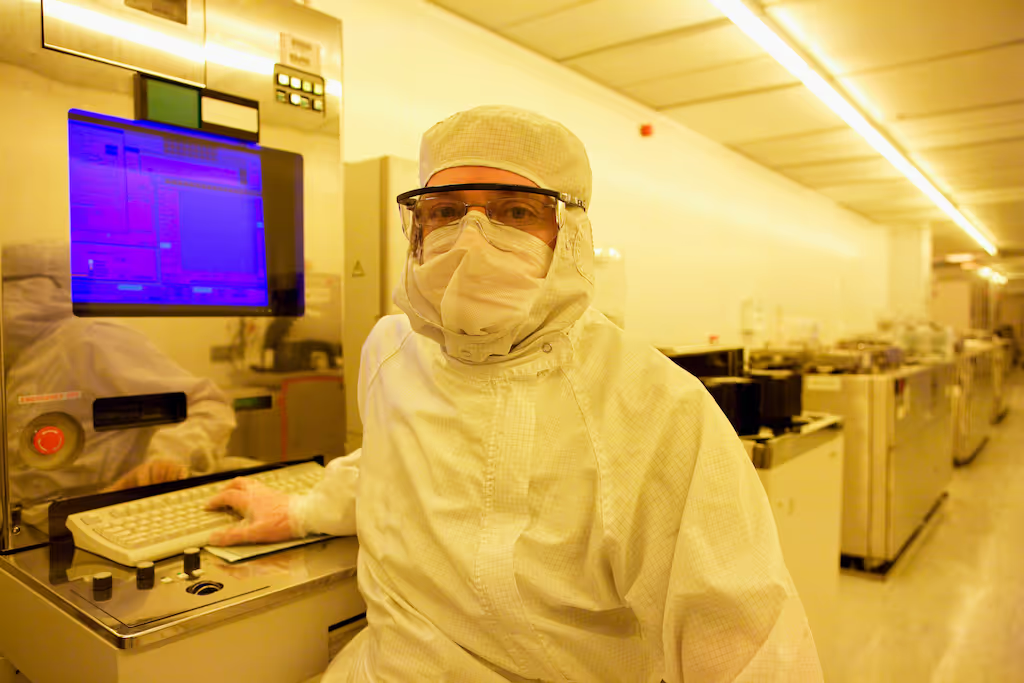
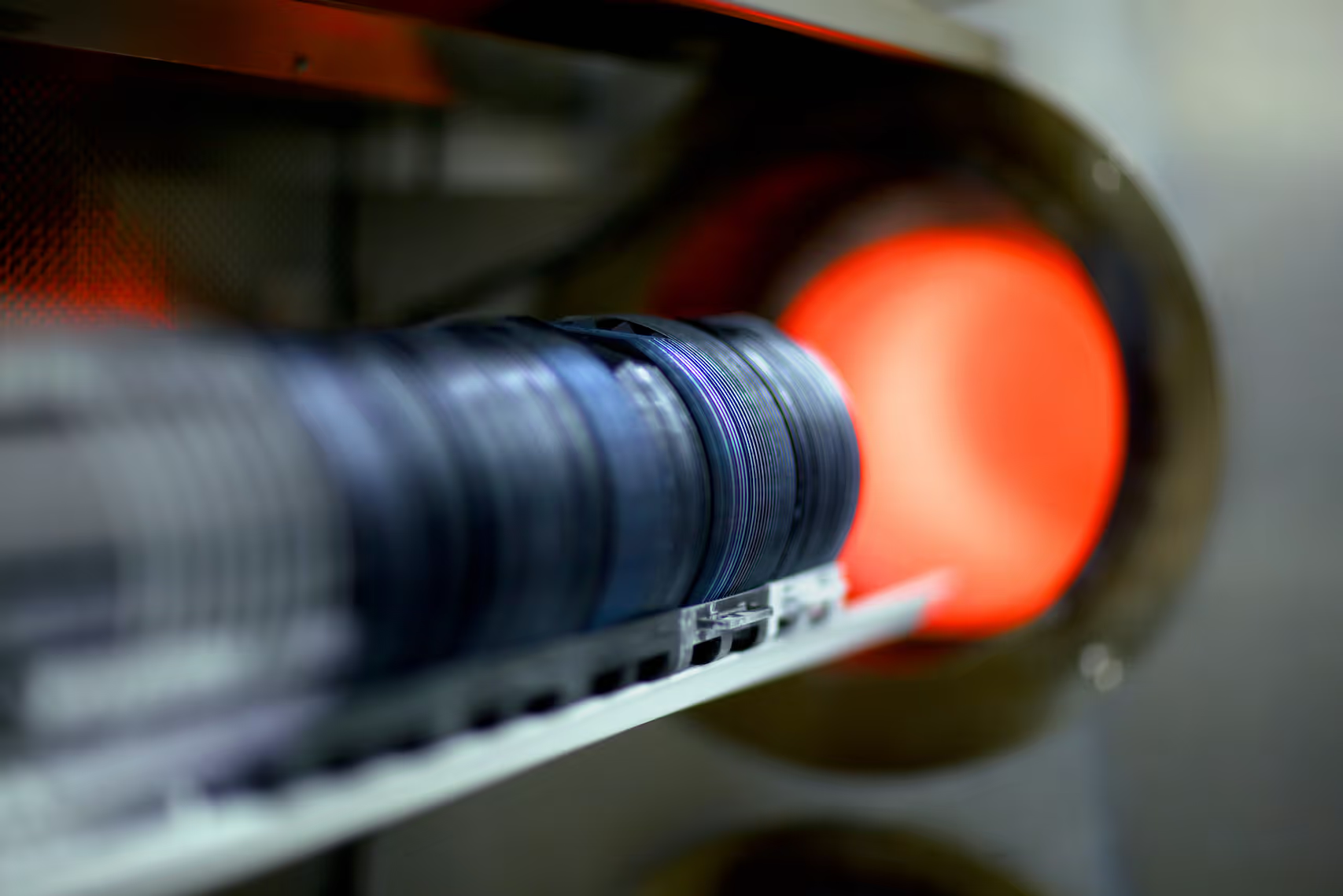
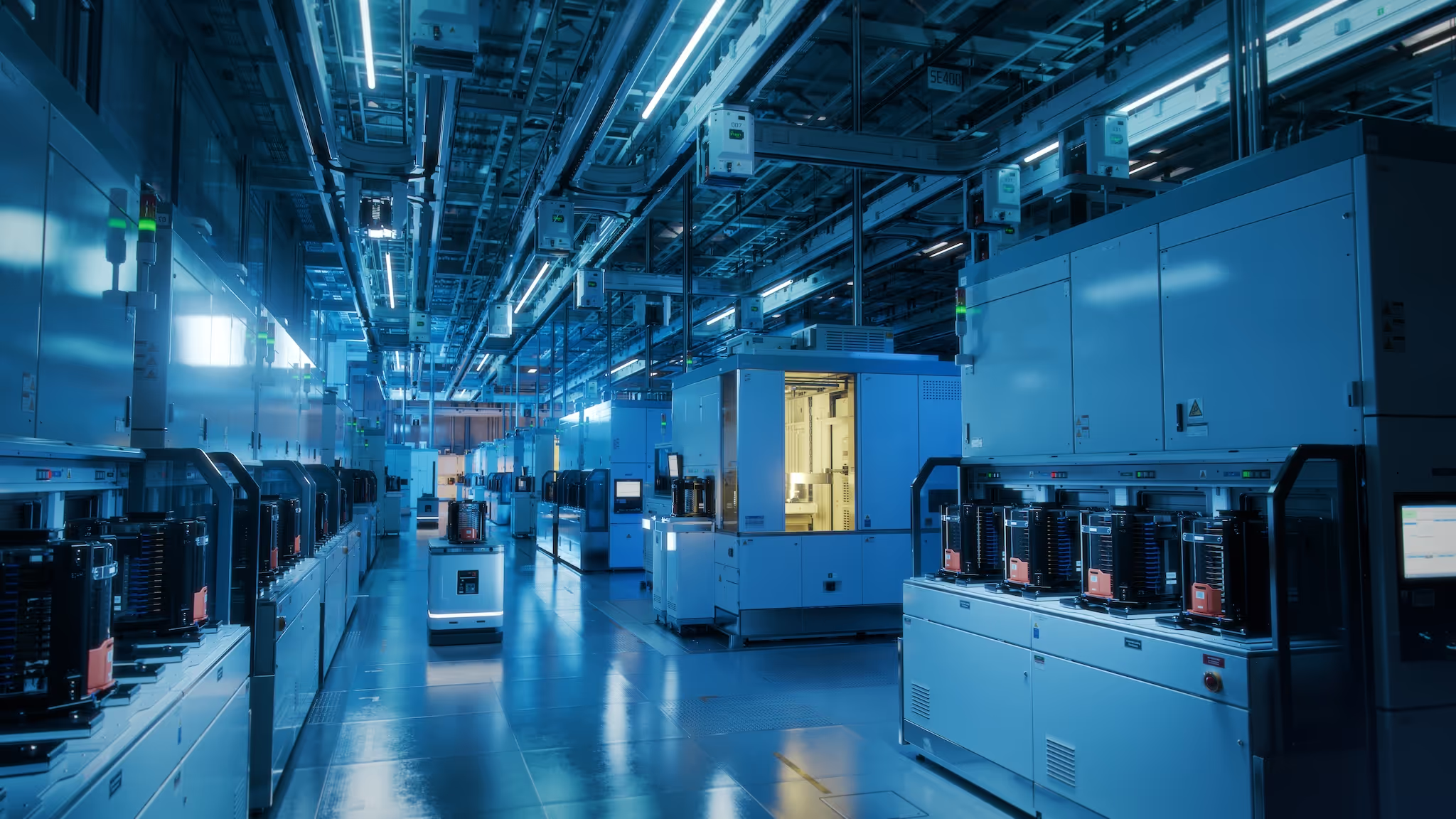

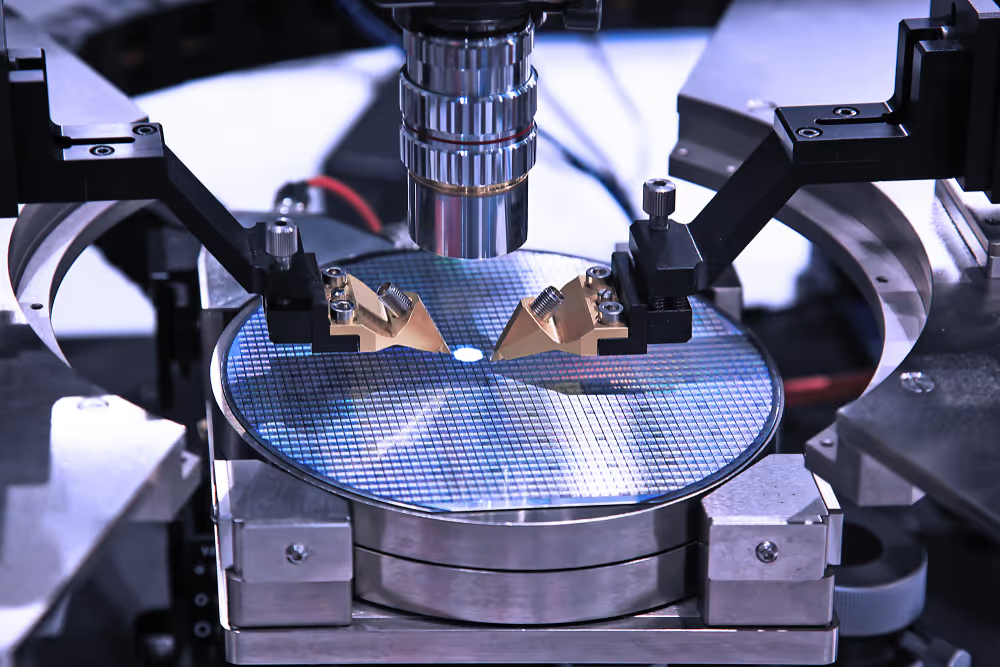
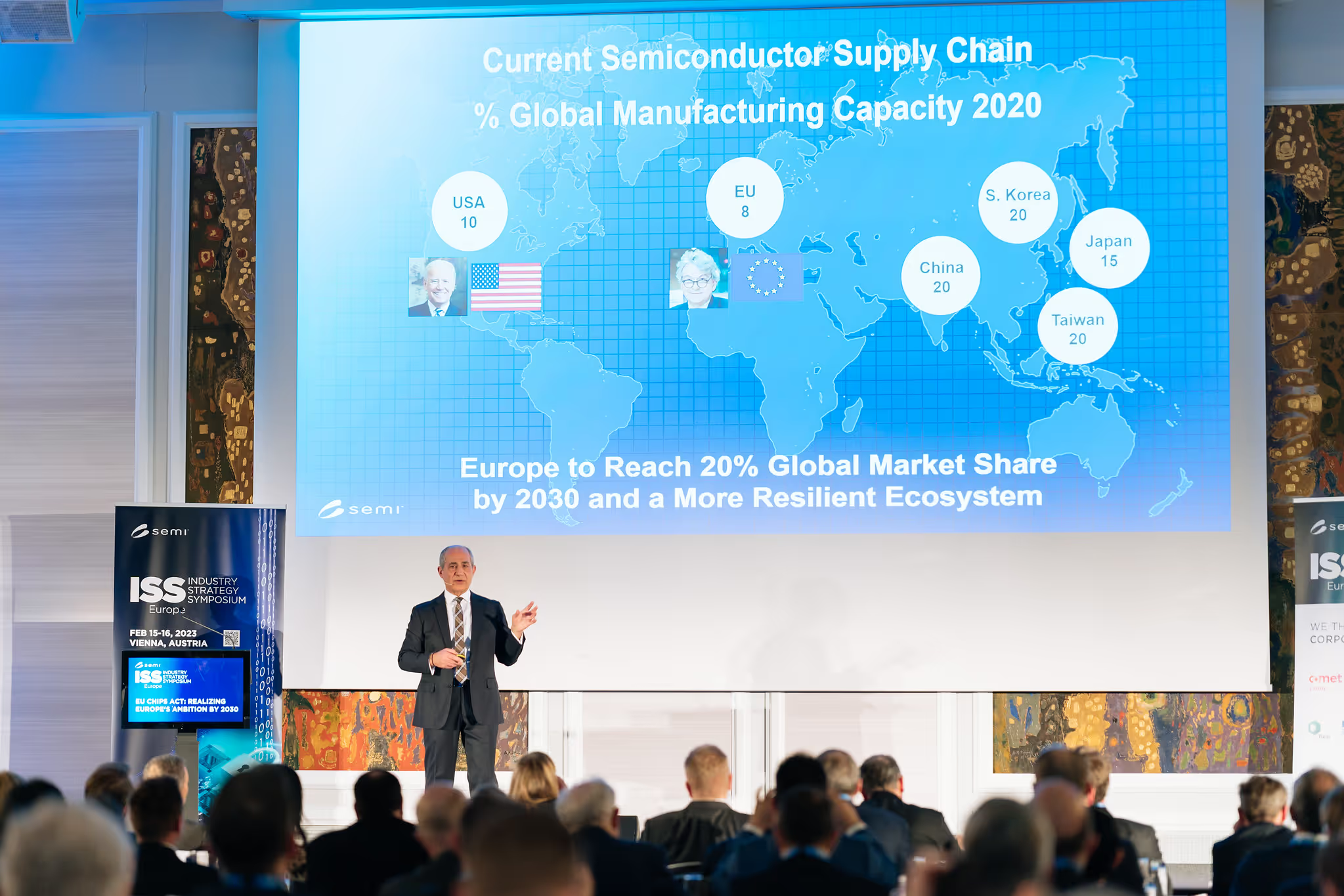

.avif)
